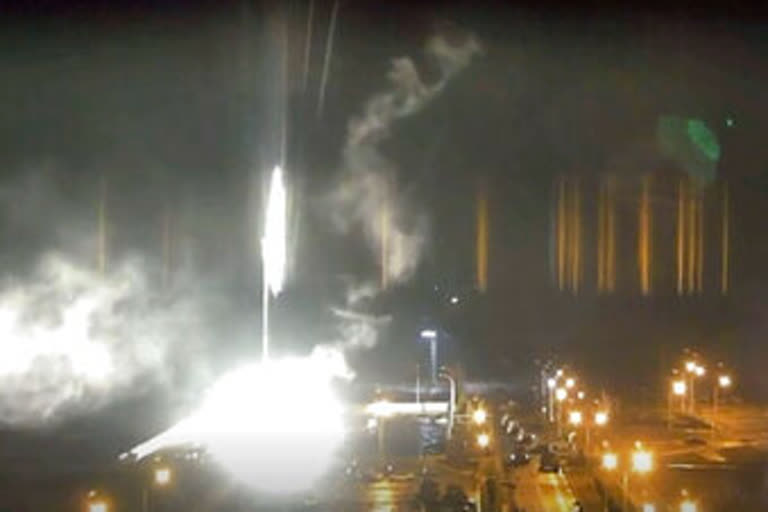New Delhi: Global panic was sparked off on Thursday and a potential disaster of unprecedented proportions was averted Friday after a fire that took place inside the compound of Europe’s biggest nuclear power plant in south Ukraine’s Zaporizhzhia was put off even Russian troops battled Ukrainian forces nearby in the ongoing conflict between the two nations. The fire is reported to have taken place in a building identified as a training centre of the 6,000 MW nuke plant now reported to be under Russian control. Night-time TV visuals showed a building on fire with flares shooting up and an explosion beside a car park with smoke billowing out.
The incident led to a blame game with the Russian and the Ukrainian sides both blaming each other for causing the fire inside the nuclear plant compound. “The cause of the fire is still hazy and not much concrete information has come out. But obviously, the International Atomic Energy Agency (IAEA) is very concerned and worried because if there is any leakage of nuclear material into the air, it would be extremely dangerous. One would not want another in Chernobyl. Also this Zaporizhzhia plant is much bigger in capacity and size,” says PS Raghavan, former chairperson of the National Security Advisory Board (NSAB) who had also served as Indian ambassador to Russia.
The NSAB advises the National Security Adviser (NSA) on national security and issues of strategic interest including nuclear matters. The IAEA is an international body that works to promote the peaceful use of nuclear energy and to inhibit its military use. “Without doubt, a catastrophe was averted. It would have been extremely dangerous and catastrophic if the radiation levels had increased. The IAEA has said that the radiation levels in and around the plant have not increased,” said Adarsh Sardana, who retired as a scientist from the Atomic Minerals Division of the Department of Atomic Energy.
Also Read: Fire out at Ukraine's key nuclear plant amid Russian attacks
“A missile strike or a burst inside the plant would lead to a big explosion, resulting in spillage of radioactive material like plutonium which would spread all across and wreak havoc. As different radioactive materials have varying shelf-lives. The material with the shortest shelf-life would have the quickest impact in minutes, while the one with the longest shelf-life would have the slowest impact lasting years impacting the future generations too,” he added. The radioactivity then spreads in the air, in living organisms, water, the ground, vegetation and the structures around.
“A huge danger remains after a nuclear plant falls into the adversary’s hands. In case of such an attack, the scientists and technicians working at the plant run away. If the reactor is unmonitored and not controlled or the new occupants do not know how to moderate the heat when the reactor generates excessive heat, there will be uncontrolled fission which means a huge explosion of catastrophic dimensions. Therefore, whoever controls the reactor will have to ensure that smooth functioning is maintained,” says Sardana.
Indicating that concerns still remain, the IAEA director-general Rafael Mariano Grossi tweeted on Friday: “Physical integrity of the (nuclear) plant (in Ukraine) has been compromised… It’s time for action… Ukraine sent a request to us. I have indicated to both Russia & Ukraine my availability and position to travel as soon as possible.”



